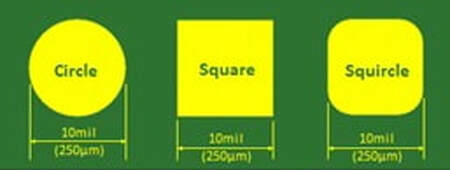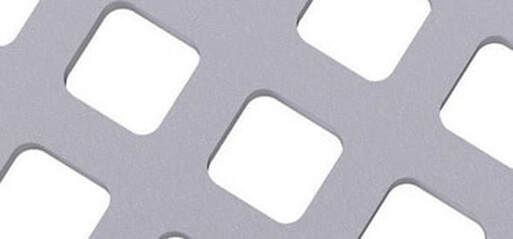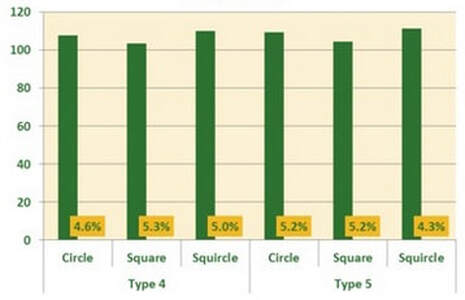Squaring the Circle
As you may have guessed, the word 'Squircle' is a portmanteau or combination of the words 'Square' and 'Circle' - also known as a 'Superellipse'. Besides having an amusing name, a squircle is an effective tool for maximizing solder paste release and overall deposit volume during solder paste printing.
A squircle (can be seen above) is a square with rounded corners that, when incorporated into stencil aperture designs for small area arrays, provides better print quality than either a square or a circle alone. It brings the best of both worlds to an extremely challenging part of the printing process.
Comparing apertures of the same major dimension (diameter or side length) and area ratio, it is possible to directly compare transfer efficiencies, actual deposit volumes and volume repeatability of the three shapes.
A squircle (can be seen above) is a square with rounded corners that, when incorporated into stencil aperture designs for small area arrays, provides better print quality than either a square or a circle alone. It brings the best of both worlds to an extremely challenging part of the printing process.
Comparing apertures of the same major dimension (diameter or side length) and area ratio, it is possible to directly compare transfer efficiencies, actual deposit volumes and volume repeatability of the three shapes.
Squares
A square has the inherent benefit of maximizing the area of an aperture. When printing solder paste, however, the particles tend to agglomerate into sharp aperture corners, resulting in more variation from deposit to deposit. It is also likely this variation will grow over time if the stencil wipe efficacy diminishes and the paste accumulation increases. Squares inherently have higher volumes than circles for the same major dimension, so of course they will deposit more paste, but if those paste-grabbing corners overlap pad edges, they also create gasketing problems that can drive high variation.
Circles
Circles have no pad-overlapping corners and no paste dead zones, thus eliminating the two major issues associated with squares. But because of their lower aperture area, they inherently print less solder paste. Additionally, circles have equal surface tension across the diameter of the aperture. During separation, this may increase the amount of solder paste that remains in the aperture. Imagine a soap bubble on a flat surface; equal surface tension keeps it stable. This same characteristic discourages paste from exiting the circular aperture. A square, however, exerts unequal forces that facilitate release.
Squircles
The squircle combines the volumetric benefit of a square without the paste accumulation or the larger overlap or of sharp corners that the circle brings to the process. The graph below to the left shows the measured transfer efficiencies and calculated coefficients of variation of each type of aperture. Notice the transfer efficiency is slightly lower on the square than the circle, but only by a few percentage points. The square also has slightly higher variation on the type 4 paste, and is equivalent to the type 5 paste data. The squircle consistently has the highest transfer rate, and comparable or lower variation than the squares or circles.
The graph above to the right shows the average volumes deposited by each aperture shape. Note that although the square showed lower transfer efficiency, its larger area resulted in higher volumes than the circle, but the squircle deposited the highest volumes of all apertures. In all cases, the type 5 paste consistently produced marginally higher volumes, but not enough to justify a transition to it in a production environment where cost, separate storage and reflow issues would arise.
Note that transfer rates are very high and variation rates very low compared to typical results from similar print tests. These print tests were conducted under an ideal environment, using a polymer nanocoated stencil. It is reasonable to expect similar trends in production environments, but likely with lower transfer rates and higher variation rates. It is also reasonable to use nanocoatings on stencils with tight area ratios because of the quality improvements they provide.




